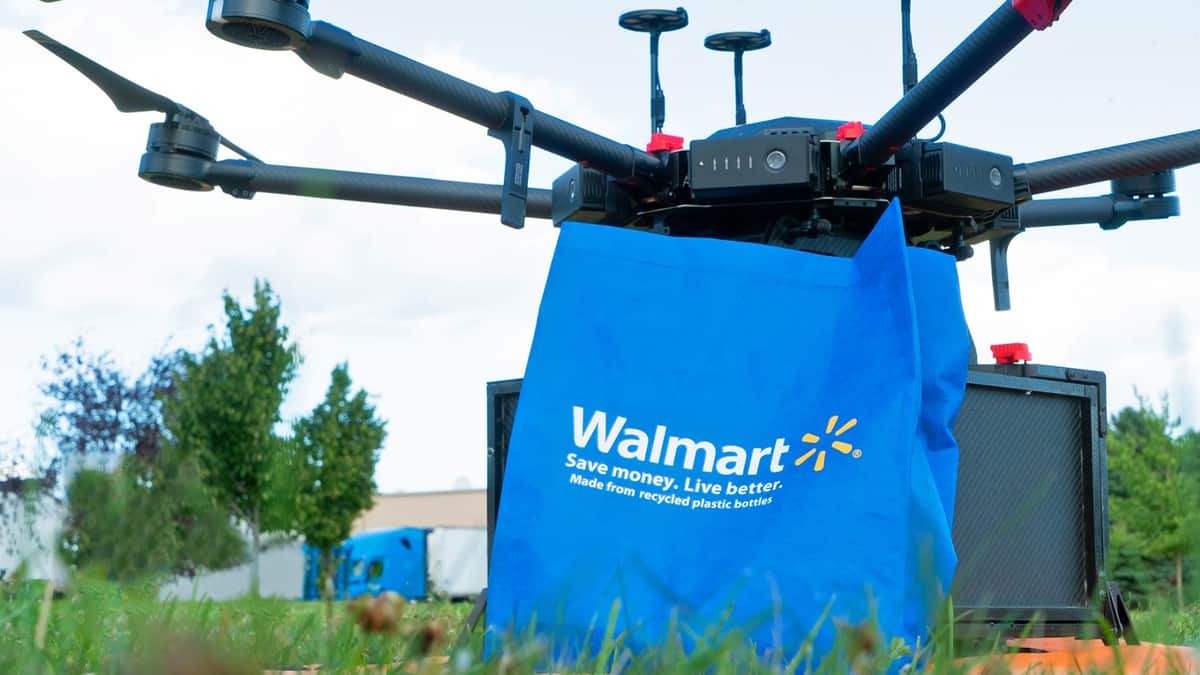In a bid to expedite its last-mile delivery channels, Walmart has announced a partnership with on-demand drone delivery company Flytrex to carry select items from its stores to consumers’ doorsteps.
In a statement, Tom Ward, senior vice president of customer products at Walmart, explained that the initiative is designed to explore how drones can deliver items in a way that is convenient and safe — and fast.
In the era of e-commerce and expedited shipping, last-mile fulfillment has grown to be a significant factor in determining consumers’ buying experience. In this context, utilizing automated drones to circle between warehouses and delivery locations and drop packages off is a tempting opportunity for companies looking to gain an edge in the hotly contested market.
“The pilot launches today in Fayetteville, North Carolina, and focuses on delivering select grocery and household essential items from Walmart stores using Flytrex’s automated drones,” said Ward. “The drones, which are controlled over the cloud using a smart and easy control dashboard, will help us gain valuable insight into the customer and associate experience — from picking and packing to takeoff and delivery.”
The drone delivery wars are heating up, with Amazon introducing drone models that would be flying packages from its fulfillment centers as part of the Amazon Prime Air program.
In August, Amazon received Federal Aviation Administration (FAA) approval to fly commercial delivery drone fleets. The company said the drone license helps it get closer to realizing its vision of reaching its customers within 30 minutes of an order being placed.
Short-range drones like the ones used by Amazon or Walmart are designed to carry small loads of roughly 5 pounds. Though this might sound like a limitation, it might not necessarily be one. Amazon estimates that nearly 90% of all products sold on its platform weigh less than 5 pounds. This would put a bulk of the products on Amazon’s inventory in the trajectory of being hauled by drones at some point in the future.
Though Amazon is de facto the largest market player within the e-commerce circuit, it would likely face fierce competition from Walmart in the last-mile drone delivery segment. With over 4,700 stores across the U.S., Walmart has at least one store within 10 miles of 90% of Americans. This provides Walmart scale that Amazon does not have now, potentially allowing the former to fulfill drone deliveries much faster than Amazon could from its fulfillment centers, which are predominantly situated on city boundaries.
Drone deliveries could be adopted faster than previously thought of, thanks to the disruption brought in by COVID-19 on consumer buying behavior. Due to extensive city lockdowns across a large part of the U.S., consumers shifted from buying across concrete storefronts to shopping online. Social distancing norms that are in effect today have led consumers to prefer contactless delivery over personalized handovers, making drone deliveries more attractive as a delivery option.
Ward is cautiously optimistic about drone technology and its impact on the future of Walmart’s delivery operations. “We know that it will be some time before we see millions of packages delivered via drone,” he said. “That still feels like a bit of science fiction, but we’re at a point where we’re learning more and more about the technology that is available and how we can use it to make our customers’ lives easier.”
***
More from Vishnu Rajamanickam
Drones will land ecommerce deliveries in your backyard soon
UPS seeks to accelerate growth of drone-delivery
How feasible are drones for last-mile delivery from a regulatory perspective?










